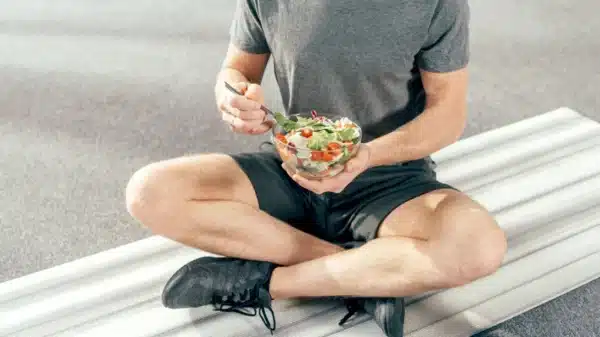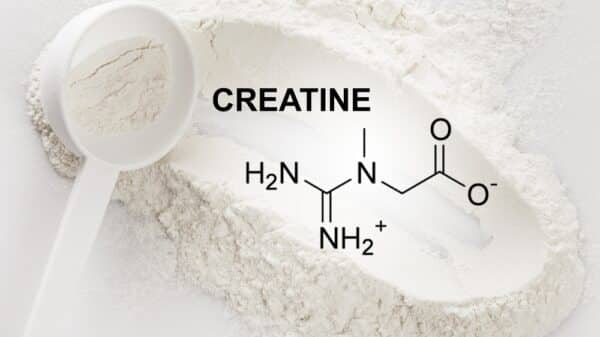Knee pain can affect anyone, regardless of age or fitness level. To keep your knees healthy and strong, knee strengthening exercises are crucial. Young athletes often face knee pain early on, which can hamper their performance. Chronic exercise strains or hereditary factors can contribute to this issue.
As we get older, knee problems become more common, with arthritis notably impacting quality of life. The most prevalent form of this condition is osteoarthritis, leading to significant discomfort.
Athletes frequently encounter knee injuries due to the demands placed on their bodies. Understanding the various issues, including iliotibial band syndrome and tendonitis, is essential for prevention and recovery.
Let’s explore the reasons behind knee pain and discover effective strengthening exercises to alleviate discomfort.
Reasons for Knee Pain
Knee pain has multiple causes, with studies indicating that most issues arise from injuries or occupational hazards. In fact, knee osteoarthritis is seen as a culmination of damage occurring over time, often as a result of triggers that affect the knee’s cartilage.
Research highlights that knee osteoarthritis will likely rank among the leading causes of disability worldwide, often manifesting as pain, stiffness, and weakened quadriceps.
Typically, knee pain stems from either arthritis or injuries.
1. Arthritis
Various forms of arthritis can impact the knees, including:
– Osteoarthritis
– Rheumatoid arthritis
– Gout
2. Injury
Common injuries contributing to knee pain include:
– Meniscal tears
– ACL and PCL injuries
– Tendonitis
– Bursitis
– Loose bodies in the knee
– Osgood-Schlatter disease
– Dislocated kneecap
– Iliotibial band syndrome
– Plica syndrome
Knee Strengthening Exercises
It’s beneficial to strengthen both legs, even if discomfort is present in just one knee. This balance can enhance support and stability.
If you feel any pain during these exercises, it’s vital to cease and consult a medical professional.
Progress at your own pace, and you’ll gradually notice improvements.
Beginning Workout
Quadriceps Strengthener
Lie on your back with a rolled towel or small foam roller under your knee. Engage your thigh muscles to straighten the knee and hold for five seconds before releasing.
Repeat this sequence ten times on each side to enhance quadriceps strength, supporting the knee joint.
Straight Leg Raise
Lie flat on your back with your legs straight. Raise your right leg six inches off the ground, maintaining the lift for ten seconds. Ensure your abdomen remains tight throughout.
By integrating these exercises into your routine, you can promote knee health and potentially reduce pain. Regular practice will lead to gradual improvement and strength building, setting a strong foundation for an active lifestyle.It’s time to focus on strengthening your knees through simple yet effective exercises that cater to your needs.
Engaging your quadriceps and core is essential. When lying on your back, support yourself with your hands under your lower back to prevent arching.
Practice this movement five times on each side. It’ll help fortify your quadriceps and nurture your knees.
Hip Adduction
To strengthen the inner thighs, lay on your back with your knees bent and feet flat on the floor. Place a small pillow, lightweight ball, or foam roller between your knees. Squeeze your legs toward the object while holding for five to ten seconds.
Release and repeat for a total of 10 to 20 times. Your inner thigh muscles will thank you!
Hip Raise
This is another excellent exercise for your glutes. Start on your back with knees bent and feet flat, heels near your butt. Push through your heels to lift your hips toward the ceiling. Hold this position for five to ten seconds before releasing.
Complete 10 to 20 repetitions to strengthen your hamstrings, vital for knee support.
Advanced Workout
Squats
Stand with feet hip-width apart and slightly tuck your pelvis. Distribute your weight into your heels and lower into a squat as if preparing to sit in a chair.
Keep your upper body upright. Aim for 10 to 20 repetitions. For an extra challenge, go deeper, but ensure your thighs remain parallel to the ground.
Single Leg Squat
This movement requires balance and strength. Stand tall with your feet hip-width apart, shifting your weight onto your right leg. Balance by lightly touching your left toe to the ground. With focus, sit back onto your right leg while lifting and extending your left leg in front of you.
Don’t go too low—just enough to feel the stretch. Repeat 10 times on each leg.
Step-Ups
Find a sturdy surface like a staircase or fitness bench. Stand with feet hip-width apart. Step up with your right foot, followed by your left. Then step back down, alternating legs. Aim for 20 repetitions to build strength and stability.
Backward Stepping Lunges
Stand with your feet hip-width apart. With ample space behind you, step backward with your right foot and lunge down without letting your knee extend beyond your ankle.
Return to your starting position and switch sides. Maintain good posture throughout this movement. Do 10 on each leg.
Front Stepping Lunges
Once more, stand with your feet hip-width apart. Step forward with your right foot, lunging down while keeping your knee behind your ankle. Push back to your starting position and repeat on the other side. Again, do 10 on each leg while keeping your posture in check.
Understanding Your Knees
Knee anatomy is vital to your understanding of strength and stability. The knee joint connects the upper and lower leg bones, allowing pivotal movements such as sitting, squatting, walking, and jumping.
This joint is crucial not only in sports but also in daily activities. When knee pain strikes, it disrupts your everyday life, making it clear just how important those joints truly are. The knee is made up of three key bones: the femur (the upper leg or thigh bone), the tibia (the front bone of the lower leg or shin), and the patella (the triangular bone that sits at the front).
Take pride in caring for your knees. These exercises not only enhance strength but also support a mindful, active lifestyle. Commit to this routine, and elevate your knee health today.Knee health is crucial for maintaining mobility and overall quality of life.
Understanding the anatomy of the knee sheds light on why proper muscle support is vital. The kneecap, or patella, plays a central role, with cartilage covering the ends of bones to facilitate smooth movement and absorb shock.
Two major muscle groups work to stabilize and move the knee: the hamstrings and the quadriceps. The hamstrings at the back of your thigh help bend the knee, while the quadriceps in the front straighten it.
When your muscles and bones are strong, they provide the necessary support to alleviate knee pain. This is where targeted exercises come into play.
Effective Strategies for Managing Knee Pain
Research indicates that exercise-based therapies are fundamental in managing knee osteoarthritis and related pain.
The American Academy of Orthopaedic Surgeons advocates for knee strengthening exercises and, if needed, weight management for those experiencing knee pain.
Working with a physical therapist can help you discover which exercises are appropriate for your specific stage of discomfort.
The Osteoarthritis Research Society International highlights the importance of non-pharmacological methods like education, weight management, coping strategies, and exercise programs.
Recommended Knee Strengthening Exercises
Exercise is essential to maintaining joint function and supporting your knees effectively. Studies demonstrate that even slight improvements in quadriceps strength can significantly lower the risk of osteoarthritis in the knee and alleviate pain. It’s crucial to select the right exercises and execute them correctly to reap the benefits. There are three main types of therapeutic exercises beneficial for knee strength: isotonic, isokinetic, and isometric exercises. Isometric exercises are particularly beginner-friendly and can be performed anywhere with little to no equipment.
These exercises are less likely to cause inflammation and can lead to rapid strength improvement. As you progress, you might consider adding more dynamic exercises, such as squats, step-ups, weightlifting, and leg lifts. Starting with simpler variations will allow you to build strength and reduce discomfort over time.
Incorporating these strategies can empower you to take charge of your knee health and enhance your overall well-being.
Image Source: Unsplash
































